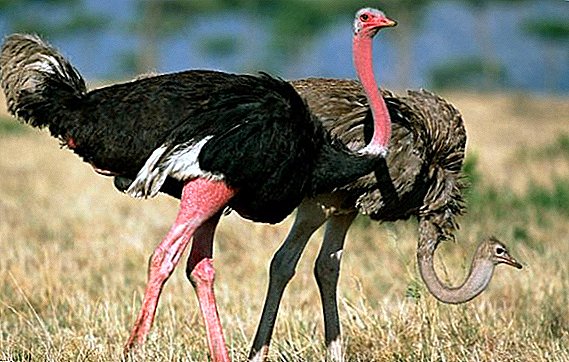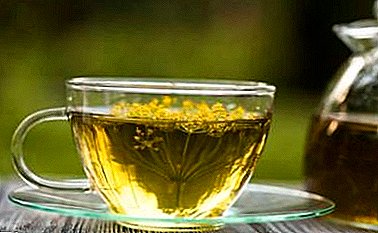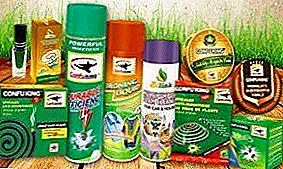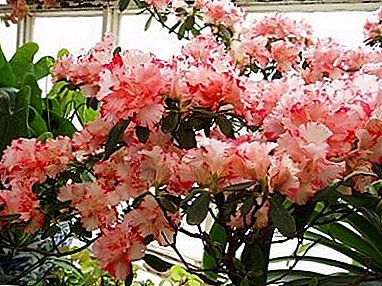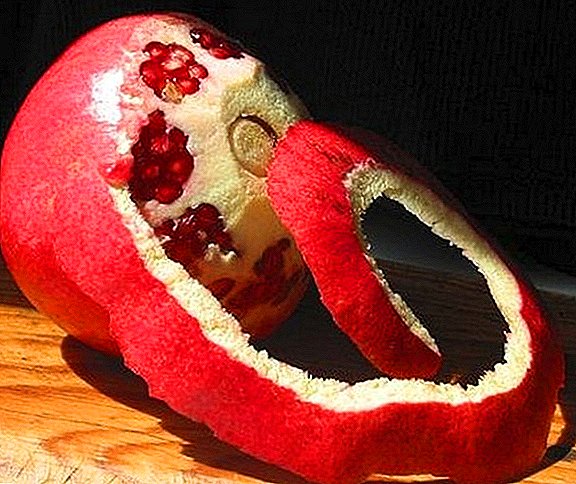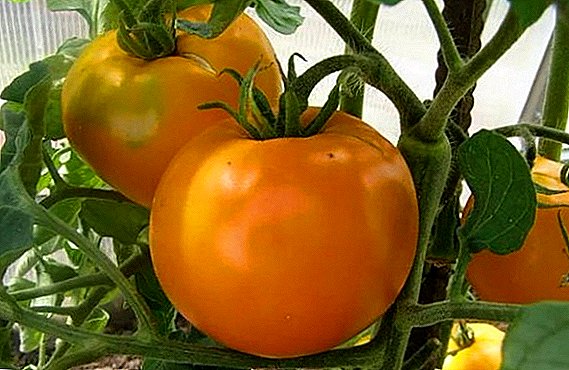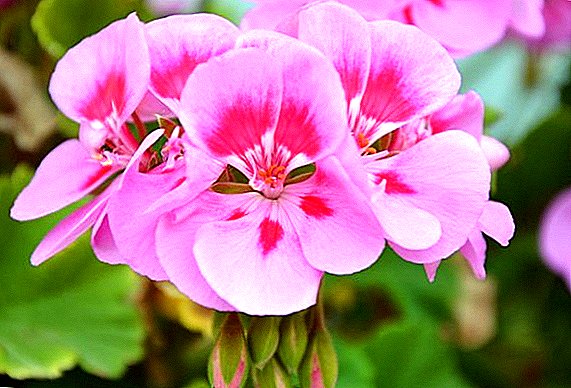 Pelargonium and geranium belong to a single family of Gerania, but are not one species, although they are confused quite often. What is their difference, read below.
Pelargonium and geranium belong to a single family of Gerania, but are not one species, although they are confused quite often. What is their difference, read below.
Geranium and Pelargonium: are they the same thing?
Plants are unlike even externally, not to mention other characteristics. The plant, which is most often grown in flat conditions, throwing out a scattering of red, pink or white inflorescences in the flowering phase, is pelargonium. Geranium is an unpretentious in the care, frost-resistant perennial plant that can freely winter in natural conditions even in Taiga.
Did you know? Leaf plates, flowers and stems of geranium and geranium emit a characteristic aroma, which is due to the presence of a large amount of essential oils in their above-ground part. Oils have pronounced antiseptic properties and are actively used in the manufacture of various drugs.
The confusion with the names was provoked by scientists. In 1738, the Dutch botanist Johannes Burman proposed to divide geranium and pelargonium into different genera. But, Karl Linnaeus, a Swedish scientist, united the plants into a single family. Thus, pelargonium, which was at the peak of its popularity at that time and was actively used in landscape design, began to qualify as geranium. The name very quickly spread among the people and firmly entrenched in their minds. 
Description of plants
Being engaged in the cultivation of flowers, one must clearly distinguish between the varieties in question in order to be able to carry out proper care for the representatives of the flora.
Pelargonium
Pelargoniums belong to thermophilic cultures, do not tolerate a long stay in rooms with air temperatures below + 10 ° C. In the warm season, they are often planted in flower beds in open ground, but with the onset of cold weather, plants need to be removed and moved back into the room.
Read also about home care for pelargonium ileum.The root system of the fibrous type allows the plant to do without moisture for a long time. Sheet plates are round. In the central part of the sheet is a darker annular region. The venation of the leaf is palmate. The color varies from dark green to purple, with a white edge running along the edge of the sheet.
Flowers are collected in umbrella brushes. The shape of the flowers depends on the variety. The main colors are presented in the red spectrum. Can vary from white to dark maroon. Less common are plants with purple and lilac flowers.  After flowering on the plant are formed boxes with seeds, shaped like a stork. Fully ripened fruits have a strongly twisted helical bundle, which expands with increasing humidity, and decreases with decreasing. With the help of this harness is carried out the spread of seeds into the soil.
After flowering on the plant are formed boxes with seeds, shaped like a stork. Fully ripened fruits have a strongly twisted helical bundle, which expands with increasing humidity, and decreases with decreasing. With the help of this harness is carried out the spread of seeds into the soil.
| Root system | gummy |
| Stem | erect |
| Leaf shape | rounded |
| Leaf color | from dark green to purple |
| Flower shape | butterfly-shaped, pinky, tulip-shaped, clove-colored, star-shaped |
| Color of flowers | white to maroon |
| Fruit Form | stork box |
| Fruit color | Gray |
Did you know? Pelargonium leaves are used in conservation. They are placed on the surface of the jam to avoid mold production.
Geranium
Under natural conditions, geranium is found in the forests of Taiga and the middle belt. The frost-resistant perennial is represented by a shrub form with an erect stem. Rhizome branched, with bulges at the ends, playing a cumulative function. Mountain specimens have a stem-type rhizome.
The leaves are covered with soft hairs. Painted in green, often with a grayish, bluish or red tint. Planted on elongated petioles. Leaves of plants, depending on their variety, have a unique pattern on their surface. The leaf shape is pinnate or rounded with a pronounced dissection. 
Flowers of large sizes are arranged individually or are collected in racemes of 3-5 pieces. The shape of flowers is cupped. Petals symmetrical. Unlike pelargonium, geranium flowers can be painted not only in red shades, but also in blue.
The boll looks like a crane's beak. Painted in gray. The fruit is equipped with long leaves, which ripen when arched upward, scattering the seeds.
| Root system | branched / rod |
| Stem | erect |
| Leaf shape | feathery, rounded with dissected sheets |
| Leaf color | green, grayish, bluish, red |
| Flower shape | cupped |
| Color of flowers | purple, white, blue, purple |
| Fruit Form | Zhuravlevidnaya box |
| Fruit color | Gray |
Distinctive features of geranium and pelargonium
The main differences of plants:
- The structure and shape of flowers - in geranium, they are symmetrical and include 5-8 petals, the petals of pelargonium flowers in the upper part are larger than the lower ones.
- Color of flowers - geranium has unlimited color range; among geraniums, there are no varieties with blue and blue flowers.
- Cold resistance - geranium can winter in open ground at -30 ° С, pelargonium begins to freeze and dies at 0 ... + 3 ° С.
- Root system - among geraniums growing in the mountains, there are specimens with a core rhizome, in pelargonium, a root of a fibrous type.
Important! Geranium and Pelargonium can not be crossed among themselves - their genetic characteristics are too different for a subsidiary plant to produce seeds.
How to care for flowers?
Pelargonium when grown in apartment conditions can bloom all year round. It is important for them to provide access to a large amount of diffused light. In order for the crown to develop evenly, plants need to be rotated around its axis relative to the light source every 3 days. In summer, the plants tolerate any heat well. In winter, it is necessary to maintain the temperature in the room not lower than + 12 ° С.
Transplantation is carried out in the spring for adult plants and several times a year for young specimens, when the roots are woven over the entire earthy bed.
Soil for pelargonium is made by mixing in equal parts:
- peat;
- humus;
- sand.
Pelargonium can be planted in open ground, but not earlier than the danger of return frosts is avoided, and the average daily temperature will be within + 15 ° C and higher. Transplantation is carried out by the transshipment method with the preservation of the earth coma. 
Pruning is carried out in the spring, removing old, dried, underdeveloped shoots. Lateral branches are shortened to 2-5 buds. The average lifespan of plants ranges from 2 to 5 years. During this period, they begin to update by rooting cuttings. Root them in early spring, and in the summer they begin to form an ornamental shrub, leaving 2 main shoots.
Forming pruning cuttings need to be carried out even under the condition of flowering in the summer, when the plant will form 8-10 sheets. Cuttings can be taken at any time of the year, but not during the flowering period and short daylight hours. It is necessary to take shoots from healthy large copies. Cutting length 2.5-7 cm, depending on the variety. The stem is dipped for a couple of hours in the root solution, and then planted in a mixture of peat and perlite (1: 1).
We recommend reading about home care for pelargonium ampella.
Do not allow the thickening of the crown and put the plants too close to each other. The crown should be periodically thinned, removing young stepchildren growing from the leaf axils. In the garter plants do not need.
Pelargonium - drought-resistant specimens, so the minimum deviations in the mode of irrigation can cause rotting of the roots. Watering is carried out as the top layer of the soil dries out, to a depth of 2 cm (about once a week) - in the summer period with the condition that the flower stands in a well-lit place. In winter, watering is limited, but does not allow the soil to dry completely - once a month. 
Humidity does not affect the condition of the plants, so they do not need to be sprayed. Watering combined with fertilizer. Young plants in the spring make urea (10 g per 5 liters of water). In the summer, they begin to make complex fertilizers of the type of superphosphate at the rate of 10 g per 10 liters of water. Before flowering, potassium salt is added over a week - 5 g per 10 liters of water.
Important! Pelargonium and geranium need abundant light, but do not tolerate direct sunlight.
Geranium is less demanding in care. She does not need top dressing, which makes the plant very profitable for growing in summer cottages. Plants grow well on any type of soil. Watering is carried out only in conditions of too dry summer.
Planted in well-lit areas. A month before planting, they dig up the area a couple of times to a depth of 20 cm. After the first digging, wood ash is applied to the soil at a rate of 300 g per m². Between plants leave a distance of 15-20 cm to prevent thickening of the landings. Periodically, every 4-6 years, you need to change the location of the bushes on the site, replanting them.
Geranium is propagated by cuttings and seeds. 
To prolong the flowering period, as the flowers wither, they need to be removed. Garter bushes are not required. Pruning is carried out as needed - wilted, mechanically damaged shoots are subject to immediate removal.
We advise you to read how and when it is better to plant geraniums at home.Geraniums do not need shelter for the winter. When grown in the conditions of an apartment geranium, you need to ensure a period of rest for the winter, reducing the temperature to + 8 ° C and putting it in a darker room. Watering at home is carried out according to the scheme given for pelargonium. Top-dressings are applied in spring (urea, as for pelargonium) and before flowering (wood ash 300 g per 10 liters of water).
Geranium and pelargonium are two completely different representatives of the same genus. They differ not only in genetic characteristics, but also in their adaptation to external conditions.


